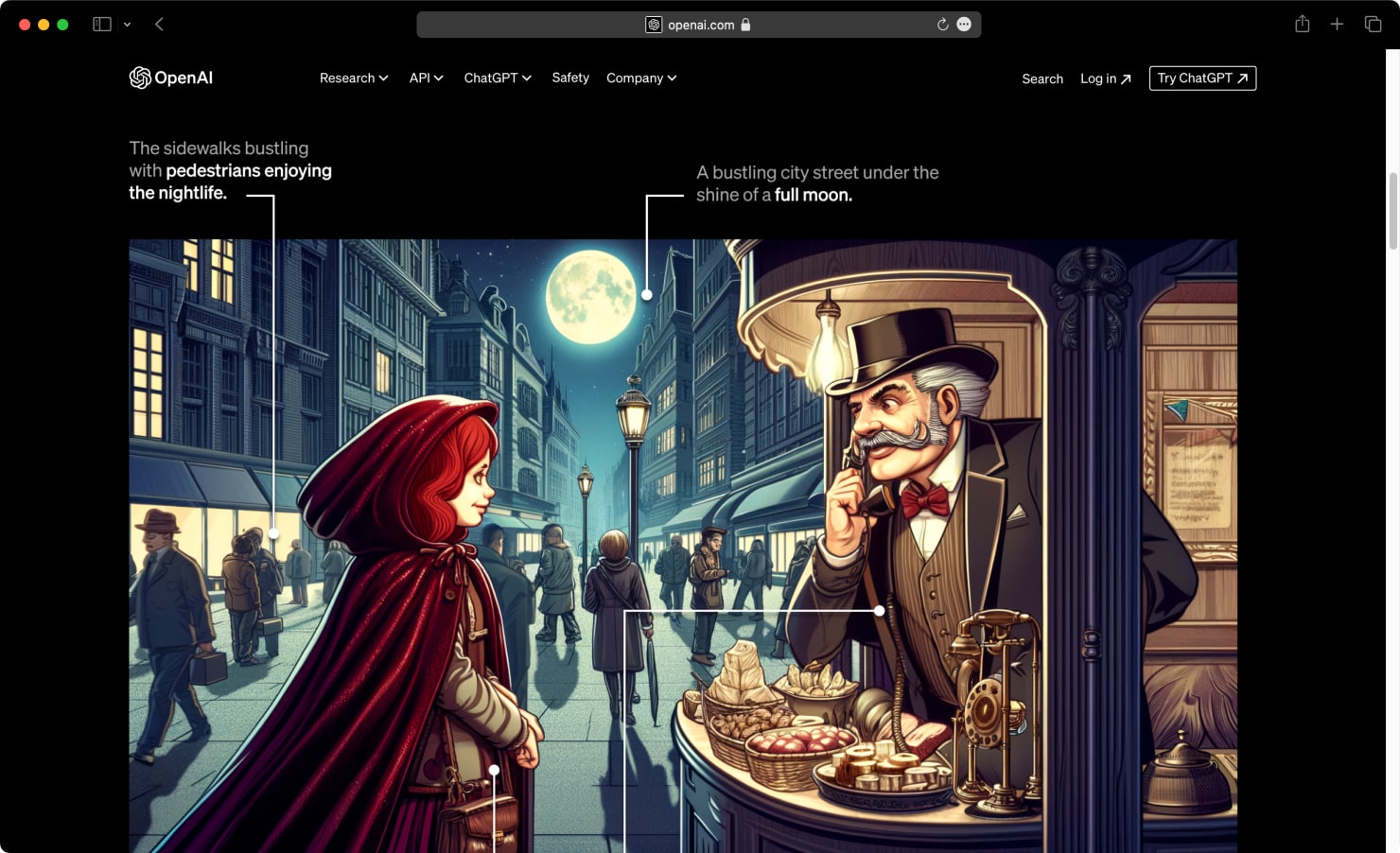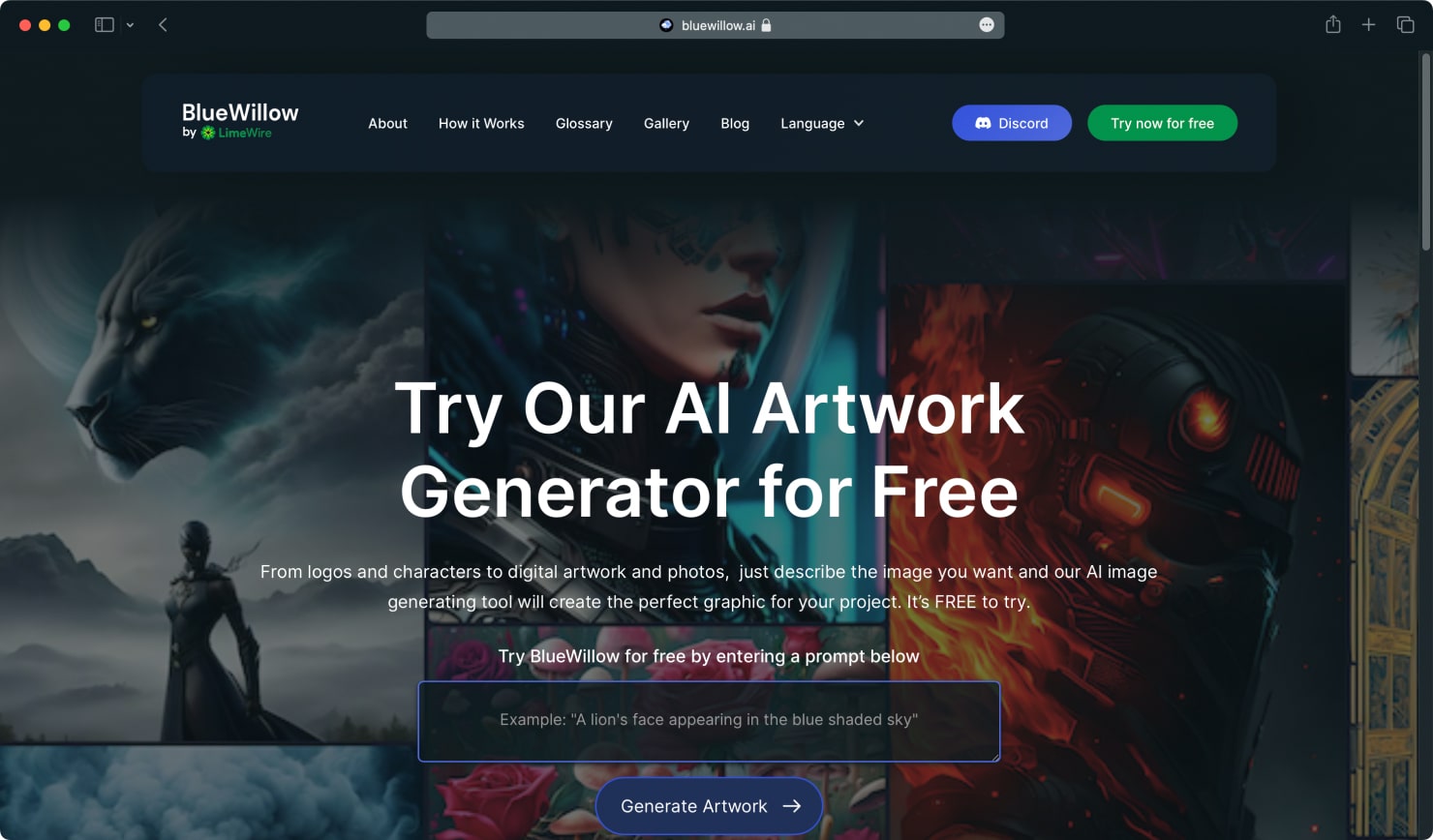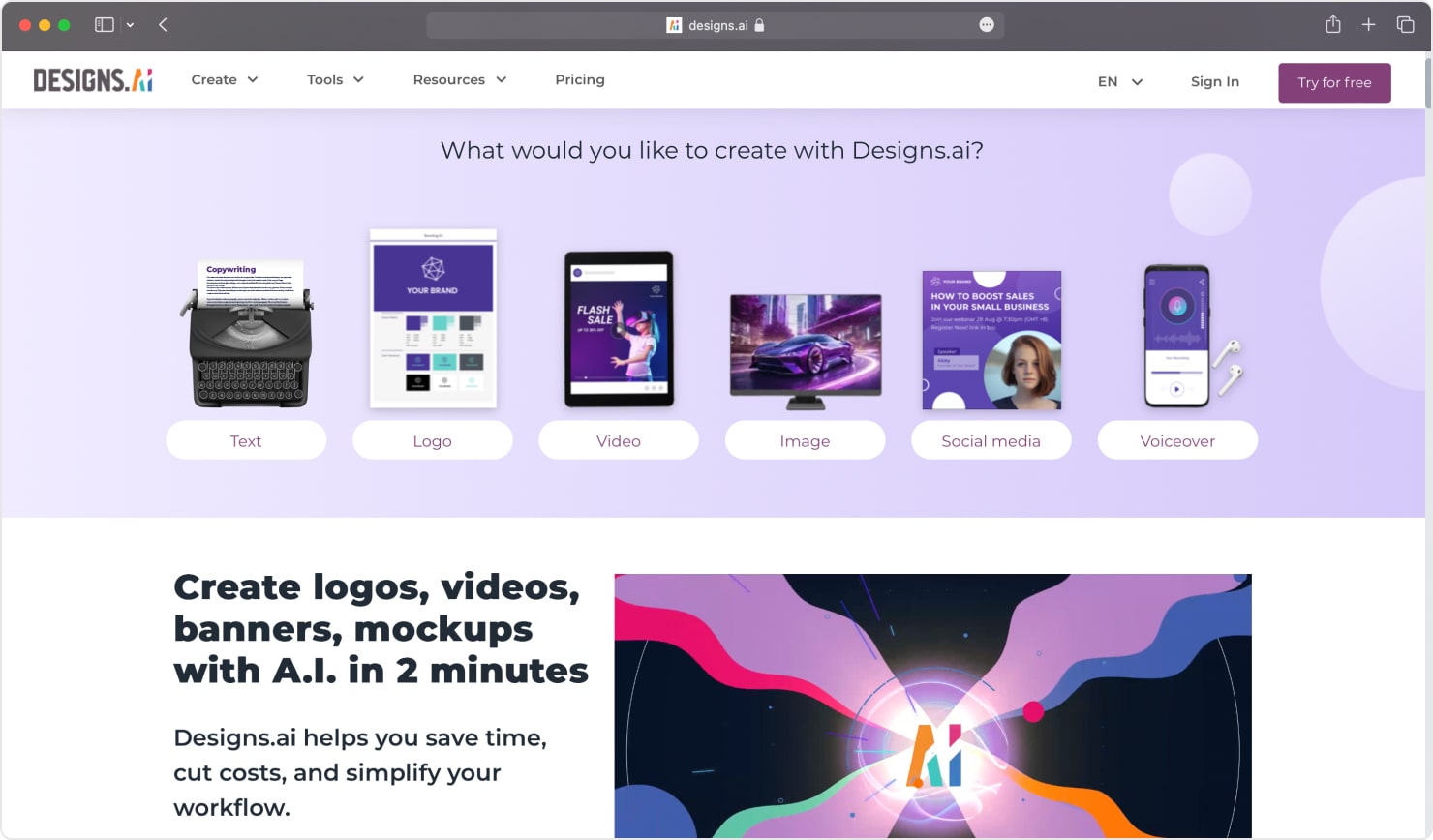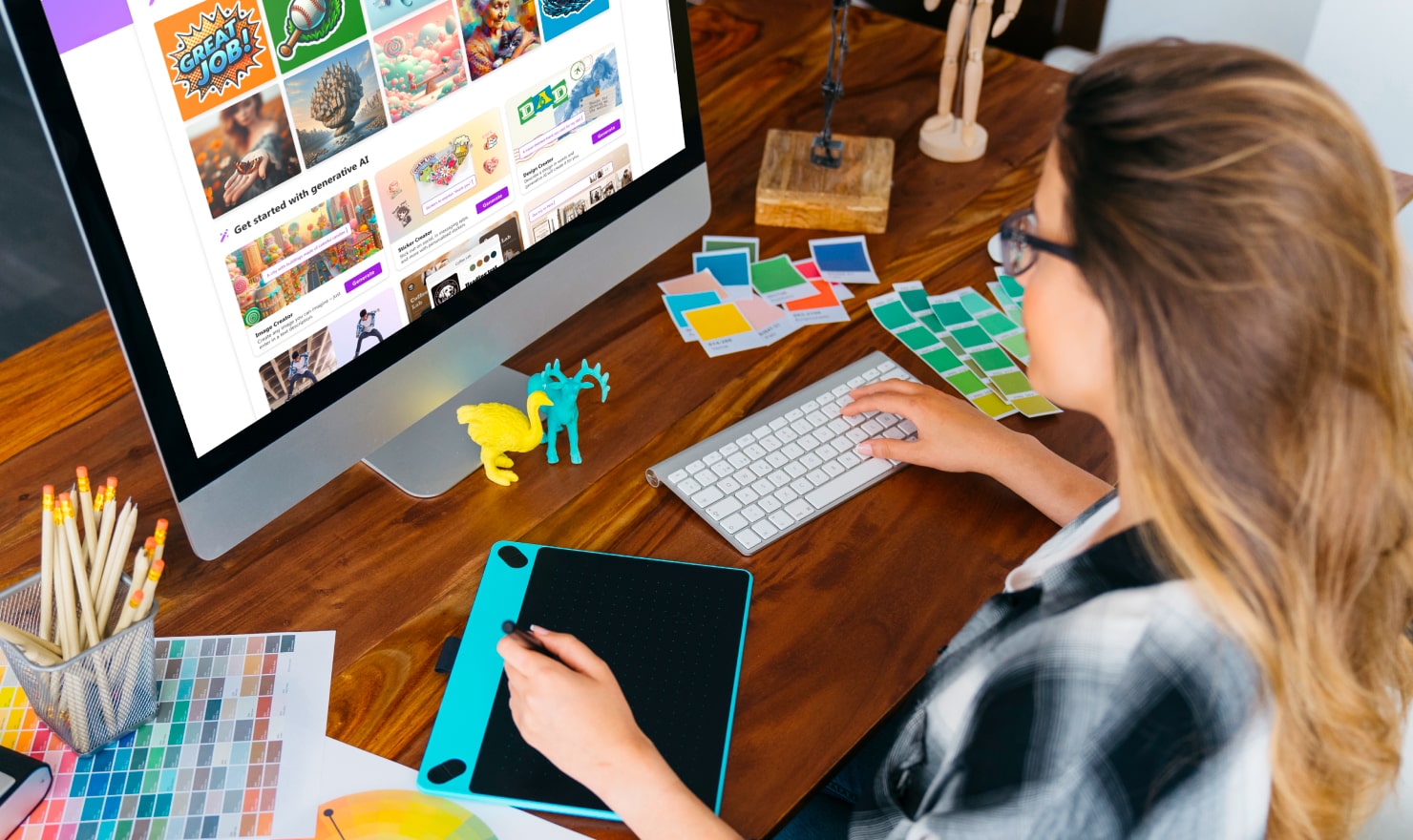Artificial Intelligence in Graphic Design: Use, Impact, Caveats
As any digital designer knows, marketing relies heavily on graphic design, which can often require a significant investment of time and talent resources. Recently, a range of artificial intelligence (AI) tools have entered the digital marketing industry on a wider level. Fortunately, as these tools have become more advanced, they are also more user-friendly. Businesses are adopting AI tools to streamline processes and achieve their design goals faster and more efficiently. AI is also gaining the ability to perform creative tasks and design work, making life easier for designers. In this article we will share some insights on the use of AI in graphic design, so you can experiment and find the tools that work for you.

What Is AI in Graphic Design?
Artificial intelligence is impacting almost every field in interesting ways, and graphic design is no exception. In graphic design, AI can be used to create new artwork, draw images, improve existing images, and even mimic realistic photos. Graphic designers are finding ways that AI tools can assist them in their work, and make design tasks quicker and easier.
Though there are already many AI tools out there for digital designers to use, we have only begun to scratch the surface of artificial intelligence capabilities in this realm.

Two Types of AI Graphic Design Tools: Generative and AI-Assisted (AI-Copilot)
To this end, there are several AI graphic design software platforms available that can help you create professional-looking projects in minutes. As a designer, these AI tools can now be part of your everyday toolkit, and can help to streamline the design process for any company. Here’s what you have to keep in mind when choosing an AI tool to use.
Generative Design Tools
So how does an AI actually understand what a user types and turn it into an image? Artificial intelligence performs this process through generative design. Generative design uses Natural Language Processing, or NLP, which teaches computers to understand human language. The AI uses algorithms to help translate text into visual images. The algorithms do this by a process called deep learning, which teaches a computer to process many complex layers of information similar to the way our brains process all the information we take in.
This is how AI tools use generative design. For example, DALL-E 3 takes in complicated words or descriptions from a prompt, and turns them into numbers that represent things like color, objects and their relationships.

For example, if a user types “a pencil drawing of a red apple on a tree”, the AI model turns this into a number code that acts like a map for the AI to follow when making the image. It tells the generator what to include and how to represent it in a drawing.
The more AI models are being trained on large datasets, the better they become at producing images that truly represent the prompt a user gives. Over time, the model learns what things like “tree”, “apple”, and “pencil drawing” are from millions of example images it has been trained on, so that it can come up with a pretty good representation of the prompt.
One example of a generative design tool is BlueWillow, which creates images, characters or photos, for free. This tool is used through a Discord server. Users write their own prompts, then the tool returns four options. Users can then select one of the four to upscale, or better define the characteristics, until the tool returns an image that suits the prompt best.

AI-Assisted Design Tools (AI-Copilot)
Some artificial intelligence tools serve as assistants, rather than tools that create a design completely based on a prompt. These “AI copilots,” as they’re called, help designers in the process of design, but they’re really driven by the human behind the computer.
AI-assisted design tools help designers in tasks like coming up with color schemes, generating brand kits or recommending layouts based on specific needs. Overall, they leverage neural networks and deep learning to make processes speedier.
One example of an AI-assisted design tool is designs.ai. This tool aims at helping users create marketing portfolios in under two minutes. The platform is organized by tasks designers work on: a logo maker, design maker, speech maker, video maker and copywriter, making it easy to kick off any kind of project you need.
Aside from reducing many manual tasks designers do, AI-assisted design tools really speed up processes for designers of every level, since everyone has access to high-level graphic design solutions. AI design copilots make great tools for professional graphic designers and hobby designers alike.

What Makes an AI Tool Great for Designers?
AI has already changed a lot of things in the design industry since these tools have been available to the public. Designers are able to create mockups in no time, define color schemes, and create images—in moments. These are activities that would have taken hours before AI came on the scene.
There are several AI graphic design software platforms available that can help you create professional-looking projects in minutes. As a designer, these AI tools can (and should) now be part of your everyday toolkit, and can help to streamline the design process for any project. Here’s what you have to keep in mind when choosing an AI tool to use.
The Impact of AI on the Design Industry
With artificial intelligence tools at their side, designers can quickly and easily create renderings, remove background or any object from a photo, or manipulate an image to suit their needs. Tasks that take hours by hand, like reproducing a sketch in multiple color palettes, now take seconds.
These artificial intelligence abilities are helping designers meet the increasing demand for original artwork and images that can be used throughout digital media, social media and any professional graphic design work. Overall, AI is speeding up everything in the design industry, and amping up the creative output of designers.

Reservations Concerning AI in Graphic Design
There are some serious concerns artists and designers have about the use of AI in graphic design. For one, any work a designer creates from an AI generative design tool can not be copyrighted. Copyright is only possible when there is proven sufficient human authorship. This has serious implications for anyone who might use an AI tool to create a brand logo.
It also affects artists who use artificial intelligence to produce images they don’t want others to replicate. As a designer, there is no way to protect your designs from being copied and used by others, if they are created by an AI design tool. In reality, a designer does not own any design or image produced by an AI tool.
Another main concern is the use of copyrighted images to train AI design models. The debate in the field is that many of artificial intelligence generative capabilities have been trained by using original, copyrighted art. Many artists contend that this is stealing work, since the designs coming from AI tools are based on original works.
As with any new advancement, there are downsides to consider. For artists who create unique art and designs, the capabilities of AI to mimic their work is a big downside.
Yes, AI tools are making designers’ lives easier, boosting creativity, and giving amazing artistic capabilities to anyone with a laptop or a mobile phone. But the “rules” of engaging with AI for designers are still being worked out and until then, we are living in an age where it’s almost impossible to tell who or what created an image.

Conclusion
Artificial intelligence has quickly opened up a new world of possibility in the graphic design field. Professional designers can take advantage of the speedy output for tasks that used to take hours. Hobby artists and professional graphic designers alike can make images, logos and photos simply with text prompts, without ever touching expensive design tools. Designers and content creators can create an entire branding kit in a few minutes.
AI in graphic design is a pathway to greater efficiency and creativity. And though there are concerns about original art and ownership, graphic designers can still be excited about the potential these tools are providing for their work.